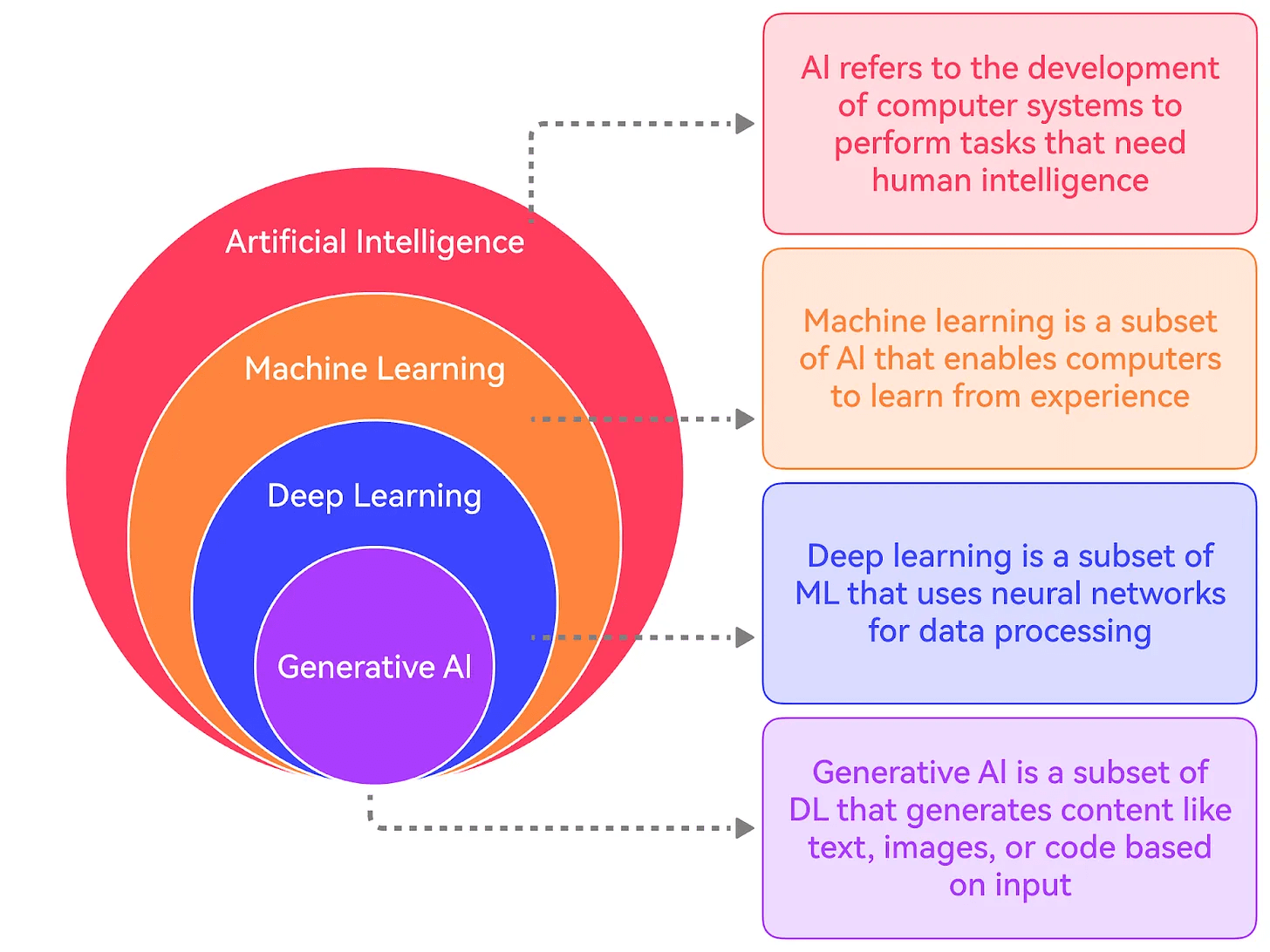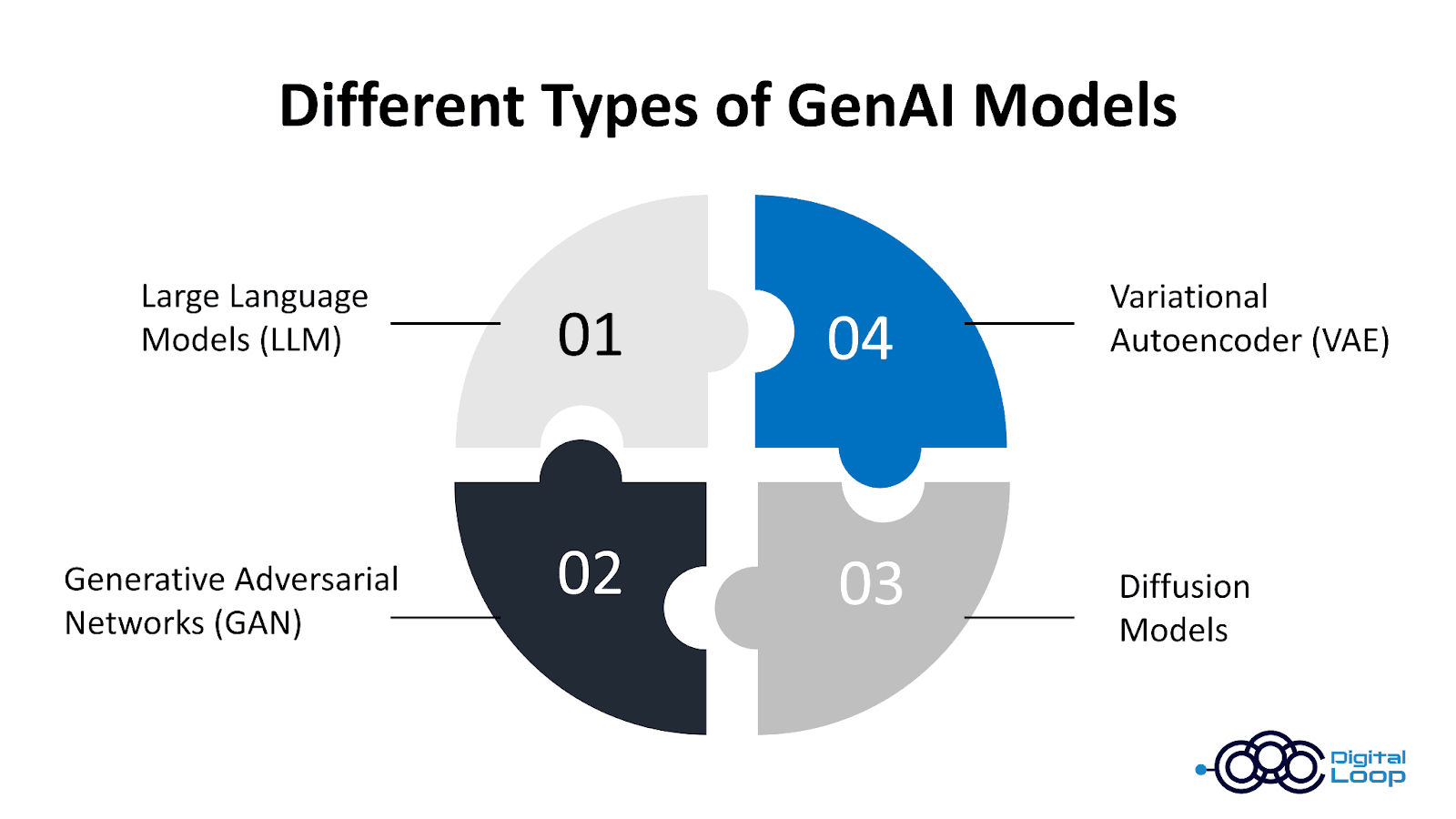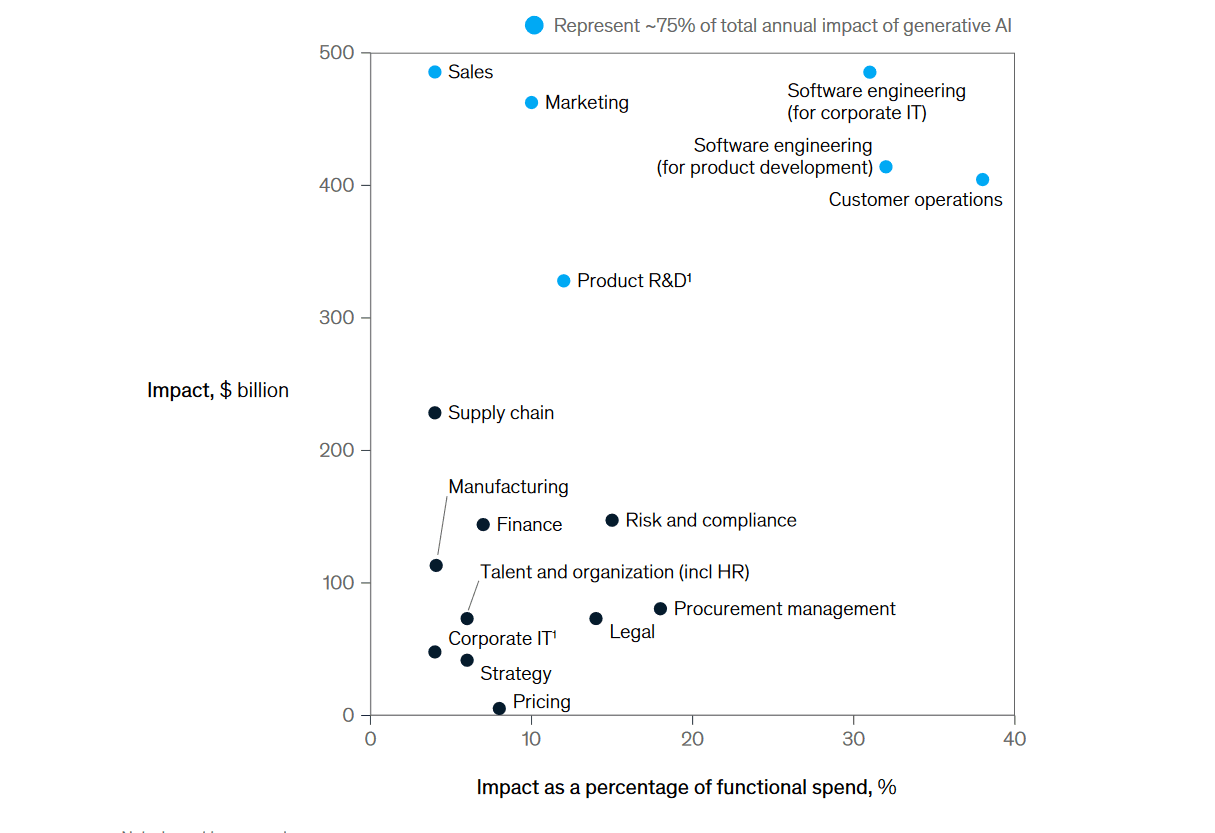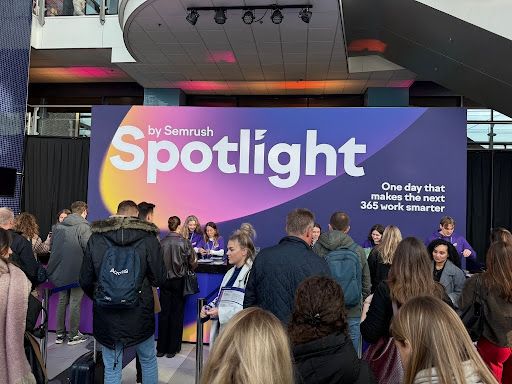Imagine you want to launch a personalized marketing campaign for your brand. Usually, you’d spend days analyzing audience insights, crafting the right strategies, and writing engaging content. But what if you could do it all in a few minutes? Well, it's no longer a dream. With generative AI (GenAI) tools and APIs, you can streamline the entire process- from gathering insights to writing engaging content and launching campaigns in no time.
The progress of artificial intelligence and machine learning has been undeniable. From empowering our smartphones to autonomous driving features in the retail industry, artificial intelligence is everywhere. According to a report by GroupM, around 55% of all global advertising is AI-enabled, up from around 50% in 2023 to around 45% in 2022. The report predicted that by 2032, AI will strongly influence around 90% of global advertising, generating over $1.3 trillion in revenue.
What is Generative AI (GenAI)?
Generative AI, or GenAI in short, is a computational technique that can help users generate unique, meaningful content, such as texts, images, graphics, audio, video, coding, etc. Different GenAI technologies, such as Dall.E2, GPT-4, DeepSeek-R1, and Copilot, are revolutionizing how we work, create content, and communicate. Besides, these platforms can be used as intelligent question-answering systems or personal assistants.
GenAI heavily relies on sophisticated algorithms known as generative models. A huge number of datasets from the World Wide Web are used to train these models. For example, around 175 billion parameters were used to train the GPT-3 model, which is ten times higher than any previous model. Open AI took this even further with GPT 4, as they considered 1.8 trillion parameters for it. This is 6 times higher than the previous GPT-3 model. If high-quality data sets are used, the bigger model is capable of generating better-quality content, which can be almost indistinguishable from human-generated content.
However, another popular GenAI model, DeepSeek-R1, uses around 671 billion parameters, of which 37 billion are active in any given interface step. The model is open-source, and therefore, you can download it from here. If you are interested in diving deep and learning more about the difference between DeepSeek and OpenAI models, read our latest blog post, Comparing DeepSeek and OpenAI Models.
Common GenAI Terminologies

Image Source: bytebytego
Artificial Intelligence
Artificial Intelligence or AI refers to the simulation of human intelligence in machines. AI can mimic human intelligence and perform different tasks efficiently, such as problem-solving, decision-making, language understanding, and perception.
Machine Learning
However, machine learning is a branch of artificial intelligence that can make its own decisions by analyzing the training data. It does not follow any fixed rules and improves efficiency as it processes more data. Some popular models of machine learning are Supervised learning, unsupervised learning, and reinforcement learning.
Deep Learning
On the other hand, deep learning, which is a branch of machine learning uses neural networks to perform comparatively more complex tasks, such as image recognition, natural language processing (NLP), and speech recognition. Deep learning models are usually trained on large amounts of data.
Generative AI
As we discussed earlier, GenAI is a branch of deep learning that focuses solely on content generation, such as texts, images, voice, video, code, etc.
Generative AI vs Traditional AI: Similarities and Key Differences
Traditional AI or non-gen AI technology consists of AI models that perform well when the task is related to the fundamental role of machine learning algorithms, such as classification, regression, pattern recognition, or prediction. Training can be supervised, unsupervised, and reinforced in the machine learning algorithms.
These kinds of algorithms are not usually used to generate creative output such as texts, images, and videos. Some primary use cases of non-GenAI are predictive analysis, fraud detection, personalized recommendation, and business process automation. Both input and output data types are usually numbers when we use traditional AI.
GenAI technology is well recognized for creating different forms of content such as text, images, voice, 3d models, sound, code, video, etc. The output of the GenAI algorithm is unique and does not explicitly exist in the training data. The performance of GenAI largely depends on the input provided by the users.
Some primary use cases of the GenAI tools are but are not limited to automated content creation, AI-generated art, synthetic data generation, and automated content moderation. GenAI algorithms are flexible with input and output data and accept texts, images, codes, audio, videos, numbers, etc.
In short, capabilities and applications make up the main difference between generative and non-GenAI models. Non-GenAI models are used to make predictions and analyze large datasets. GenAI models are further ahead and can create unique and meaningful new content identical to the training datasets.
Difference between GenAI and Traditional AI
| Feature | Generative AI (GenAI) | Traditional AI |
| Purpose | Generates human-like content | Analyzes, classifies, and makes decisions based on existing data |
| Output | Generates original output that did not exist before | Makes logical decisions. |
| Core Technology | Popular models are GPT 4, DeepSeek-R1, Gemini 2.0, etc. | Known for using rule-based algorithms, decision trees, and traditional ML models |
| Creativity | Can create unique and creative content | Works within predefined rules and patterns |
| Data Requirements | Learns from huge datasets to produce human-like output | Learns from comparatively smaller data-based and pre-defined rules to predict an outcome. |
| Hardware requirements | Needs hundreds of higher-end GPUs for training and running models | Can run simply on CPUs, embedded systems, or lower-end GPUs. |
| Power Consumption | Extremely high due to large-scale deep-learning models | Moderate to high, but will depend on the model you are using. |
| Common Use Cases | Text to image, text to video, Email summarization, deepfake technology, etc. | Weather prediction, Image recognition, fraud detection, etc. |
| Popular Tool | Chat GPT, Gemini, Synthesia, HeyGen, Runway, Midjourney etc. | Netflix AI, Amazon AI, IBM Watson Assistant etc. |
Generative AI vs Predictive AI: Similarities and Key Differences
We have already learned what generative AI is and where it is used. Both generative AI and predictive AI leverage the power of machine learning and learn from huge training data sets to provide personalized output. However, the main difference between generative AI and predictive AI is that predictive AI focuses on forecasting but generative AI uses machine learning for content generation.
Predictive AI is capable of forecasting future events, future patterns, or future trends through statistical analysis powered by machine learning. To provide prediction with higher accuracy, predictive AI uses Big Data technology to gather large amounts of structured and unstructured data and then forecast events, trends, or patterns based on the analysis.
Predictive AI Popular Use Cases
As we have already discussed, the aim of conducting predictive analysis is to identify future trends and patterns. This can help businesses with different tasks, such as managing inventory, forecasting yearly growth or profit, predicting user experience, forecasting the outcome of marketing campaigns, etc.
Predictive AI can provide such results by analyzing former data such as previous inventory reports, past campaign results, existing customer behavior, etc. For example, by analyzing the sales of printers, predictive AI models can predict the demand for ink cartridges in the upcoming months.
Different Types of GenAI Models
In the last couple of years, a good number of GenAI models have been published. These models are capable of performing different tasks such as text generation, image creation, question and answering systems, speech generation, or simply automating repetitive tasks. Therefore, the impact of these GenAI models on the creative industry is significant as a wide range of jobs are being transformed daily. Some of the most popular task-specific GenAI models are:

Generative adversarial networks (GAN)
Generative adversarial networks or GAN is a sophisticated deep-learning model that has two necessary components: a generator and a discriminator. The generator is responsible for creating synthetic data that is similar to real data, while the discriminator works to differentiate the fabricated data from the real data. Therefore, it can be said that the generator component increases the quality of the data, and the discriminator determines whether the data is real or synthetic. GAN is heavily used for image processing and biomedicine.
Variational autoencoder (VAE)
Variational autoencoder or VAE comes from a combination of variational inference and an encoder-decoder architecture. Autoencoders have two necessary elements: an encoder network and a decoder network. The encoder network maps high-dimensional data to low-dimensional data, while the decoder network reconstructs the authentic input from the representative data. The problem with traditional autoencoders is that they can not create new data points. The everyday use cases of VAE are anomaly detection, data compression, image generation, audio, video, and text generation.
Large language models (LLM)
Large language models, or LLM, are the most popular GenAI language models in 2025, and these models were developed to create content such as images, texts, audio, and video on a large scale. These models largely depend on neural network modeling and require self-supervised training to generate the desired output. The output also largely depends on the provided input, which is also known as the prompt. Some widely used LLM models are GPT 3.5, GPT 4, DeepSeek-R1, Gemini, Llama 3.3, etc.
Diffusion models
These models are known for progressively introducing noise until the expected distribution is confirmed. This model works great for image generation. It first creates noise to corrupt the image and gradually reduce the quality. The noise keeps increasing until the image is completely destroyed. Diffusion models are capable of reversing the process once the training is completed and can restore a corrupted image successfully.
Applications of GenAI Technology
ChatGPT was launched in November 2022 by Open AI, and it reached 10,00,000 users within the first five days. Within just two months, the platform gained 100 million monthly users. TikTok needed nine months, and Instagram 2.5 years to reach 100 million users. The growth of GenAI did not stop in 2022, and new GenAI tools with diverse capabilities are being released almost every month. With the help of these tools, digital marketers can now generate unique and engaging content, such as social media posts, blog articles, graphics, landing pages, audio, video, etc., within a much shorter time.
According to McKinsey, Marketing and sales, customer operations, software engineering, and research and development will account for 75% of annual values created by GenAI technology.

Figure: Impacts of GenAI on different industries (McKinsey)
HubSpot surveyed 100+ digital marketers, and 48% of them expressed that they use GenAI for research, while 45% answered that they use it to create content. Besides, 45% of marketers mentioned data analysis use cases, and 32% of marketers mentioned that they use GenAI tools to learn how to do things.
Effective and Efficient Content Creation
GenAI can shorten the ideation and content drafting phases of content creation, thus saving the marketer's valuable time and workload. Besides, it can also help marketers achieve a uniform brand voice, consistent writing style, and format for all platforms. Collaboration and integration are big hurdles in content creation, and these can also be reduced by all-rounder GenAI tools. For example, Jasper, formerly known as Jarvis, which is a version of GPT-4 dedicated to digital marketing, can write sales emails, web copy, blog posts, social media posts, ads, etc. just, within a few seconds, and users can invite their colleagues to further edit or manage the contents.
GenAI can decrease the need for experts to create high-quality content. For example, it is now possible to create high-resolution, realistic images and graphics with the help of Adobe Firefly and Midjourney, which are GenAI tools. Moreover, GenAI tools can take over the internal design team of many small organizations in the coming years, and humans will be responsible for prompting and taking care of tools. So, GenAI may not make human support obsolete, but it can significantly affect employee numbers.
Personalization and Targeting
Through in-depth data feeding and analysis, GenAI can support marketers to create content focusing on specific interests and behaviors. Content personalization can happen when marketers offer dynamic product recommendations, integrate customized website experiences, or send targeted emails. Big companies like Netflix and Amazon have been using such personalization techniques for years either to generate personalized watch lists or simply to recommend products to increase cross-selling.
As it takes less time to create content, marketers can focus more on personalization and create different versions of the same content for different segments, demographics, and geographics. Translating a landing page or creating multiple variants of an email with different images, texts, and CTA is a lot easier these days, which can increase campaign conversation rate, customer value, and customer retention.
Revolutionizing Customer Engagement
Chatbots powered by GenAI are capable of understanding both simple and complex customer inquiries and provide personalized answers immediately. Companies can save a lot of resources by feeding such chatbots the necessary data so that they can provide relevant responses.
A large number of customer inquiries can be handled this way, and human agents can focus on answering only those questions for which human touch is essential. Nowadays, around half of the total customer inquiries made by telecommunications, banking, and utility companies in America are being resolved using machines. The use of GenAI can further reduce human involvement in these industries by up to 50%.
Automation and Data Analytics
Companies have always wanted to understand and track their customers. The growth of GenAI in the last few years has made such sentiment analysis more accessible and affordable. Therefore, now it is possible to analyze vast amounts of online reviews and social media data to understand what customers think about a product, campaign, or company.
Another recent survey by HubSpot revealed that the three most popular applications of GenAI in sales are automating manual tasks (35%), providing insight backed by data(34%), and writing sales pieces or potential outreach messages (31%). The sales professional respondents also mentioned that these GenAI use cases support them most while performing daily tasks to reach their goals.
Potential Risks of GenAI Adoption in Business
GenAI can help create high-quality content, such as texts, images, video, code, etc, with minimum human involvement, and companies are trying to leverage the benefits. GenAI platforms, such as ChatGPT and Gemini, are being trained constantly on large-scale data to be there, but no one knows which data is being used. Therefore, there is a high chance of intellectual property rights violations. Not only that, there are some other issues, too, like data privacy, quality, and biases.
Data Security and Privacy
ChatGPT was accused of storing user data in the chatbot library and, therefore, saw massive criticism. On the other hand, Google Bard does not save such information in its system, but there is evidence that it uses user data for further training. Therefore, organizations should be careful about which data can be provided as prompt in the GenAI tools and which data should not be.
Besides, the growth of GenAI also enables cybercriminals to attack computer systems and servers with more sophisticated tactics. Prompt injection attacks can also happen, through which attackers can mislead chatbots to reveal sensitive data or create delusional content.
Intellectual Property Rights
GenAI tools and platforms are trained on the public data available on the internet and designed to provide outputs based on the input or prompt given by the users. As a result, there is always a chance of intellectual property rights violations as some of the contents, especially images created by GenAI tools such as ChatGPT or Midjourney, can be someone’s original work and be protected by copyright laws. Therefore, users should be careful when publishing AI-generated content on public platforms, and they need to make sure the content does not violate any copyright laws.
Amazon has already taken the initiative and forbidden its employees from sharing code with ChatGPT as these data can be later used for further training, and Amazon's confidential data can be leaked. Sometimes, GenAI platforms can also provide the same output to multiple users, which can lead to allegations of plagiarism. Organizations should conduct further analysis on how they can secure their intellectual properties while leveraging the power of GenAI.
Hallucinations and Bias Concerns
GenAI tools are not accurate yet and are quite renowned for hallucinations. They can often produce inaccurate content, which can significantly affect the campaign results or, worse, can completely ruin a brand's image if not checked carefully before being published. Poor-quality content created by GenAI tools can also lead to customer reactance as they may develop a feeling of not being treated well.
Automated reinforcement learning techniques can be implemented to mitigate hallucination issues. This way, the GenAI model will automatically know when it makes any mistakes. Such anomaly detection can also correct data before it goes to the model's pool of knowledge.
Optimizing the training data sets is another way to reduce hallucination. Although this process can take a very long time, if the volume of the training data set is huge, like ChatGPT, it will significantly reduce biases and hallucinations. Overall, GenAI tools or platforms can be more trusted and reliable by implementing such reinforcement learning systems and correctly optimizing the training data sets.
Conclusion
To sum up, GenAI adoption will be crucial in 2025 to ensure growth and minimize cost although it has its challenges. Companies can overcome these challenges by promoting data literacy among employees. Let’s talk about how GenAI adoption can help your business:
- Personalization influenced by location and user behaviors: GenAI technology can be leveraged to customize content followed by individual preferences, locations, and behaviors. This can lead to higher conversions and better user experience.
- AI-Driven Recommendations: GenAI models are trained on huge datasets and, therefore, can provide accurate, dynamic recommendations for different industries like insurance, fashion, food delivery, travel, etc.
- Seamless User Experience: GenAI tools are trained to mimic and produce human-like content. This enables machines to interact with humans more efficiently for different purposes, such as trip planning, advertising, and shopping.
- Business Impact: Business impact or growth is a key driving factor behind GenAI adoption. Businesses can achieve tangible results like more customers, higher revenue, and social media buzz by using GenAI effectively.
That was all for today. I hope you have enjoyed reading the blog post. If you have any queries or want to partner with us, please feel free to reach out to us using the contact form. Also, don’t forget to check out our latest blog posts here.









